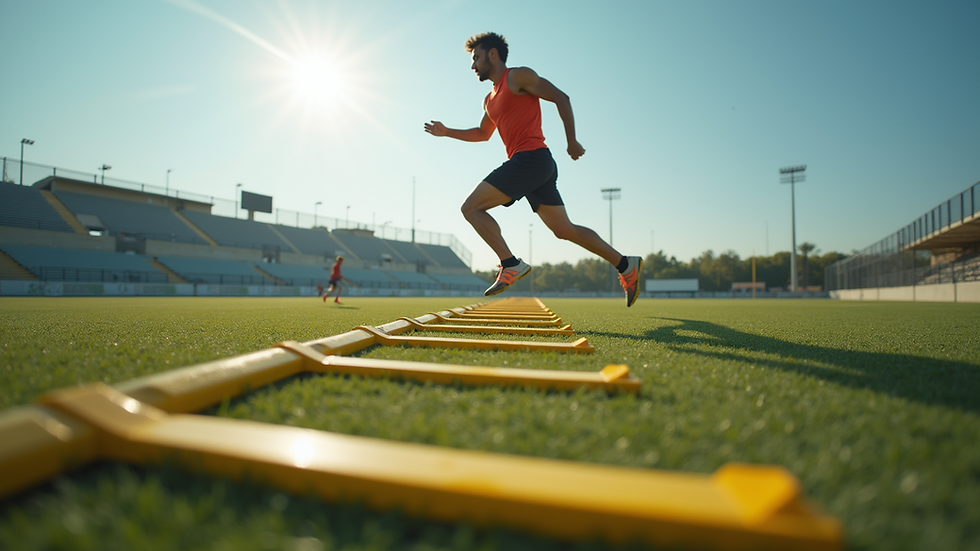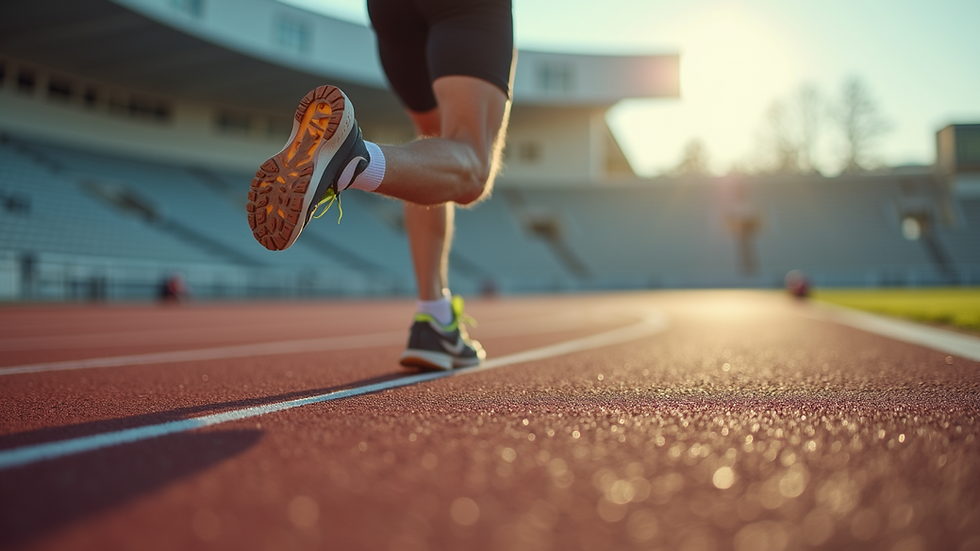How Sports Performance Training Improves Athletic Skills
- BeHealthConscious Team

- Aug 18
- 3 min read
Athletic skills are the foundation of success in any sport. Whether you are a beginner or a seasoned athlete, improving these skills is essential to reaching your full potential. One of the most effective ways to enhance athletic abilities is through structured sports training. This approach focuses on developing strength, speed, agility, and endurance, all of which contribute to better performance on the field or court.
The Importance of Sports Training for Athletes
Sports training is more than just physical exercise. It is a comprehensive process that targets specific areas of athletic development. By engaging in regular training sessions, athletes can:
Increase muscle strength and power
Improve cardiovascular endurance
Enhance coordination and balance
Boost mental focus and reaction time
For example, a soccer player who trains with agility drills will be able to change direction quickly during a match. Similarly, a basketball player who works on vertical jump exercises will improve their ability to rebound and block shots.

Incorporating sports training into an athlete’s routine also helps prevent injuries. Proper conditioning strengthens muscles and joints, reducing the risk of strains and sprains. Additionally, training programs often include flexibility exercises that keep the body limber and resilient.
Key Components of Effective Sports Training
To maximize the benefits of sports training, it is important to focus on several key components. These elements work together to build a well-rounded athlete:
Strength Training
Building muscle strength is crucial for power and endurance. Weightlifting, resistance bands, and bodyweight exercises are common methods used to increase strength.
Speed and Agility Work
Speed drills, sprinting, and agility ladders help athletes move faster and change direction with ease.
Endurance Training
Cardiovascular exercises like running, cycling, and swimming improve stamina, allowing athletes to perform at a high level for longer periods.
Flexibility and Mobility
Stretching and mobility exercises prevent injuries and improve range of motion.
Skill-Specific Drills
Practicing sport-specific skills ensures that training translates directly to improved performance during competition.

By combining these components, athletes can develop a balanced skill set that enhances their overall performance. Coaches often tailor training programs to the needs of individual athletes, focusing on areas that require the most improvement.
How do athletes train to improve performance?
Athletes use a variety of training techniques to boost their performance. These methods are designed to target different physical and mental aspects of athleticism:
Periodization: This involves dividing the training schedule into phases, such as preparation, competition, and recovery. Each phase has specific goals to optimize performance at the right time.
Cross-Training: Engaging in different types of exercise helps prevent burnout and overuse injuries. For example, a runner might incorporate swimming or cycling to maintain cardiovascular fitness without stressing the joints.
Mental Training: Visualization, goal setting, and mindfulness techniques improve focus and confidence during competition.
Nutrition and Recovery: Proper diet and rest are essential for muscle repair and energy replenishment.
Athletes also rely on technology, such as wearable devices and video analysis, to monitor progress and refine techniques. This data-driven approach allows for precise adjustments to training plans.

The Role of sports performance training in Skill Development
One specialized form of training that has gained popularity is sports performance training. This type of training focuses on improving the physical attributes that directly impact athletic performance. It combines strength, speed, agility, and endurance exercises with sport-specific drills.
For example, a baseball player might work on rotational power and hand-eye coordination, while a swimmer focuses on stroke efficiency and lung capacity. The goal is to create a customized program that addresses the unique demands of each sport.
Sports performance training also emphasizes injury prevention through proper technique and conditioning. Athletes learn how to move efficiently and safely, reducing the likelihood of setbacks.
Practical Tips for Incorporating Sports Training into Your Routine
If you want to improve your athletic skills, here are some actionable recommendations to get started with sports training:
Set Clear Goals: Define what skills or physical attributes you want to improve. This will help you stay motivated and track progress.
Create a Balanced Schedule: Include strength, speed, endurance, and flexibility exercises in your weekly routine.
Warm Up and Cool Down: Always prepare your body before training and allow time for recovery afterward.
Focus on Technique: Proper form reduces injury risk and maximizes training effectiveness.
Stay Consistent: Regular training is key to long-term improvement.
Seek Professional Guidance: Working with a coach or trainer can provide personalized feedback and support.
By following these tips, athletes at any level can enhance their skills and enjoy better performance in their chosen sport.
Improving athletic skills through sports training is a journey that requires dedication and smart planning. Whether you are aiming to compete at a higher level or simply want to enjoy your sport more, structured training can make a significant difference. Embrace the process, stay committed, and watch your abilities grow.



Comments